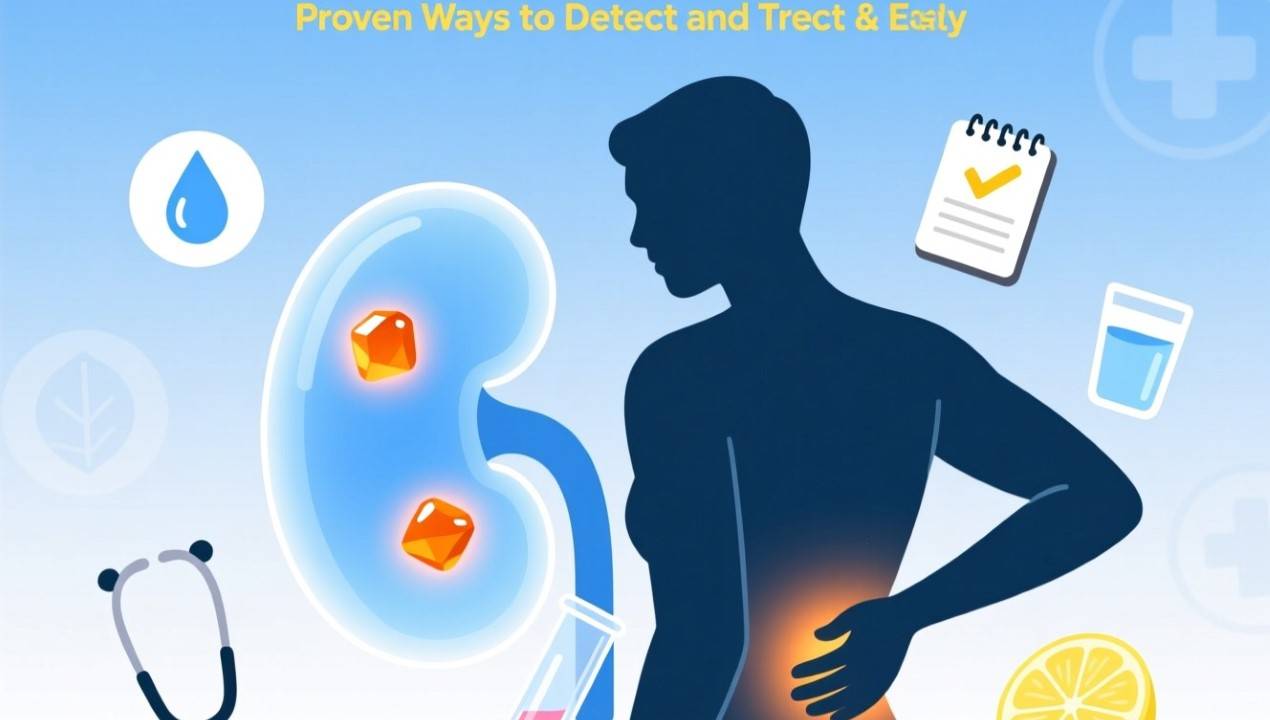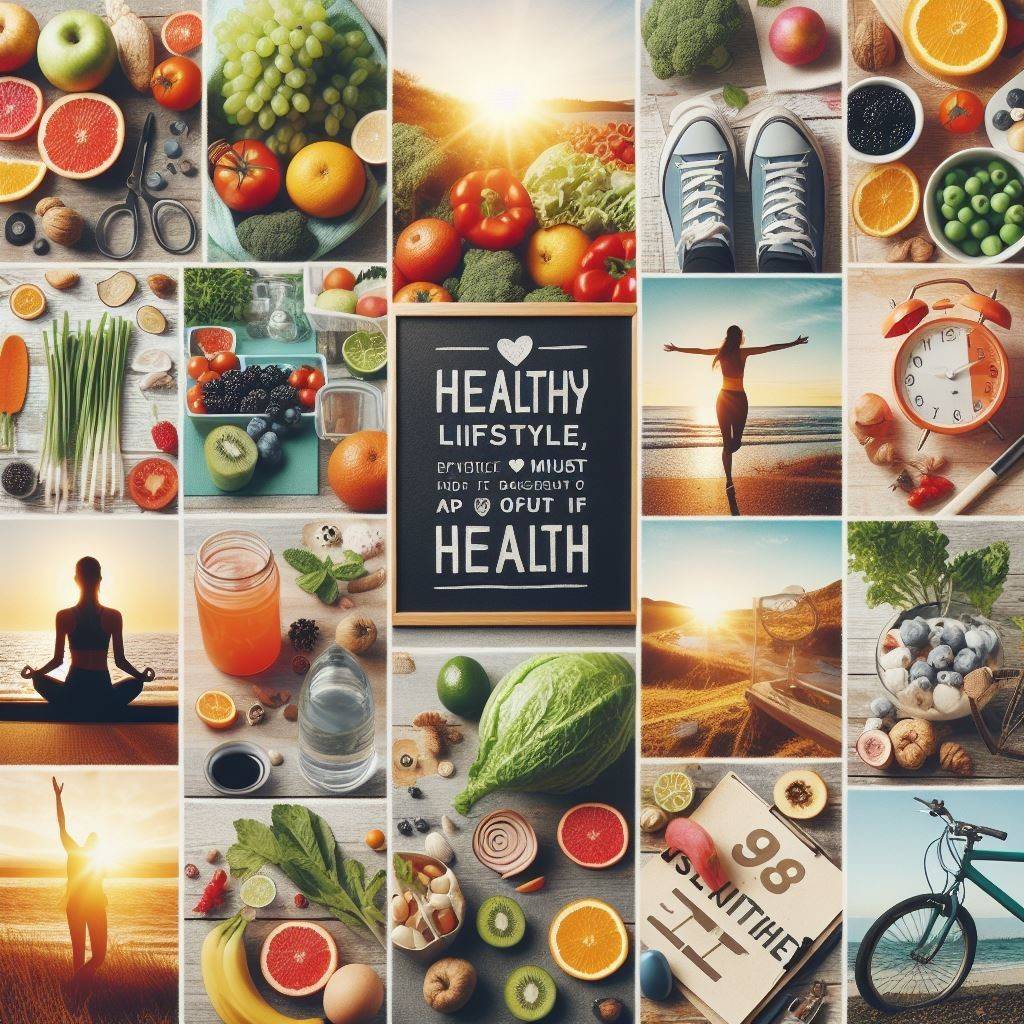Kidney stones symptoms can sneak up on you with sharp, unexpected pain or odd changes in your pee. These hard mineral clumps form in your kidneys and can make daily life miserable when they move. The good news? Spotting kidney stones symptoms early and taking simple steps like drinking water or seeing a doctor can ease the pain and protect your kidneys.
Let’s dive into everything you need to know about Kidney stone pain, how to catch them early, and what to do next, in clear, easy words.
What Are Kidney Stones?
Kidney stones are hard deposits of minerals and salts that form in your kidneys. Think of them like tiny rocks made from things like calcium or uric acid in your pee. They can be as small as a grain of sand or as big as a marble.
When they stay still, you might not notice them. But when they move, kidney stones symptoms like kidney stone pain or trouble peeing can hit hard.
The [National Kidney Foundation] says about 1 in 10 people will deal with kidney stones at some point. Men get them more often, but women, kids, and even teens can, too. I’ve seen friends go through this, and the pain can be a real shock. Knowing the signs of kidney stones helps you act fast and avoid bigger problems.
Common Kidney Stones Symptoms to Watch For
Kidney stone symptoms range from mild to severe. Some stones are “silent,” meaning you don’t feel them until a test finds them. Others cause clear, painful signs. Here’s a detailed look at the most common kidney stone warning signs:
Early Symptoms of Kidney Stones
Early kidney stone symptoms can be subtle, so pay attention. Catching them early can save you from worse pain later. Here’s what to look for:
- Mild flank pain: A dull ache in your side or lower back, below your ribs. It might feel like a muscle pull at first.
- Slight burning urination: A sting or discomfort when you pee, like a mild urinary tract issue.
- Cloudy or smelly urine: Your pee might look murky or have an odour, hinting at irritation.
Actionable Tip: Start a symptom journal. Write down when you feel kidney stone discomfort locations or pee changes. I like this trick because it’s simple and helps doctors understand your case faster.
Kidney Stone Pain Symptoms
Kidney stone pain is often the first big clue. It’s sharp, comes in waves, and can move as the stone travels through your urinary tract. Here’s how it feels:
- Flank pain location: Starts in your side or back, below the ribs. It’s often one-sided.
- Pain spreading: Moves to your lower belly or groin as the stone shifts.
- Wavelike intensity: Pain can last 20–60 minutes, then ease up before returning.
I’ve seen people describe this pain as worse than anything else they’ve felt. It’s not constant, but when it hits, it’s hard to ignore.
Tip: Try a warm compress on your side to ease kidney stone pain symptoms. It won’t fix the stone, but it can calm you while you wait for a doctor.
Blood in Urine and Kidney Stones
Blood in urine and kidney stones a common signs. Your pee might look pink, red, or brown, or the blood might only show up in a lab test. This happens when a stone scratches your urinary tract, irritating.
What to notice: Even a tiny tint in your pee is a red flag.
How often: It might come and go as the stone moves.
Why it matters: It could signal a stone or another issue, like an infection.
Tip: Keep a small cup to check your pee’s color daily. If you see blood in your urine, call your doctor and save a sample for testing. I’ve found this helps people feel more in control.
Nausea and Vomiting with Kidney Stones
Nausea and vomiting kidney stones, are tied to severe pain. The intense renal colic symptoms can overwhelm your body, making you feel sick or causing you to throw up.
What it feels like: Queasiness or an upset stomach, especially during pain waves.
Why it happens: Pain signals mess with your stomach’s normal function.
When to worry: If nausea lasts with fever, it could mean an infection.
Actionable Tip: Sip water slowly and lie down in a muted room if you feel nausea and vomiting kidney stones. I’ve seen this help friends stay calm until they get medical help.
Urinary Symptoms of Kidney Stones
Urinary symptoms of kidney stones include changes in how you pee:
- Needing to pee often: Feeling like you must go all the time, even if little comes out.
- Painful urination and kidney stones: A burning or stinging feeling when you pee.
- Trouble peeing: A weak stream or feeling like you can’t empty your bladder.
These signs happen when a stone irritates your bladder or ureter, the tube from your kidney.
Tip: Don’t hold your pee—it can make things worse. Go when you need to and drink water to keep things moving.
Key Fact Box:
- Kidney stone symptoms can mimic infections or other issues.
- Pain moves from the flank to the lower belly as the stone travels.
- About 50% of small stones pass on their own with water and time.
Why Do Kidney Stones Symptoms Happen?
Kidney stone causes come down to what’s in your pee. Too many minerals, like calcium or uric acid, and not enough water create crystals that form stones. Symptoms start when these stones move or block your urinary tract. Here’s what triggers them:
- Dehydration: Less water means concentrated pee, perfect for stones.
- Diet: Too much salt, sugar, or animal protein raises risk.
- Family history: If your parents had stones, you’re more likely to get them.
- Health conditions: Obesity, diabetes, or gout can increase kidney stones.
I’ve noticed people who skip water or love salty snacks often face this. Staying hydrated is a significant change.
How to Know If You Have Kidney Stones
Not sure if the pain you’re feeling is actually caused by kidney stones? Look for these kidney stone warning signs:
- Sharp flank pain that shifts to your belly or groin.
- Burning urination, kidney stones or frequent need to pee.
- Blood in urine, kidney stones or cloudy, smelly pee.
- Feeling tired or sick with nausea and vomiting kidney stones.
Tip: Use a free symptom checker online, like one from Mayo Clinic, to compare your signs. But I always see a doctor for proper kidney stones. I’ve seen this save time and worry.
Proven Ways to Detect Kidney Stones Early
Catching kidney stone symptoms early can prevent bigger issues. Here’s how to stay ahead:
Listen to Your Body’s Signals
Small clues, like mild kidney stone discomfort locations or slight blood in urine, are early warnings. I’ve seen people ignore these, only to face worse pain later.
Tip: Check your pee daily for colour or smell changes. It’s an easy habit that catches problems early.
Get Regular Tests
Doctors use simple tests for kidney stone diagnosis:
- Urine test: Checks for blood, crystals, or infection.
- Blood test: Looks for high mineral levels, like calcium.
- Imaging: CT scans or ultrasounds show stone size and location.
Tip: If you’re at risk (family history or past stones), ask for a yearly urine test. It’s quick and can spot trouble early.
Know Your Risk Factors
Some people are more likely to get stones:
- Hot climates or summer months (dehydration spikes).
- Jobs with little water access, like construction.
- Past stones or family history.
Tip: If you’re at risk, set a phone reminder to drink water every hour. I love this because it’s so easy to do.
Kidney Stones Treatment Options
Once you spot kidney stones symptoms, treatment depends on the stone’s size and your symptoms. Here’s what works:
Flush Out Small Stones
Small stones (under 4mm) often pass with kidney stone passing symptoms like mild pain or burning urination. Drinking 2–3 liters of water daily helps push them out.
Actionable Tip: Mix lemon juice with water daily. It may help dissolve stones and tastes refreshing—I’ve tried it and love it!
Manage Kidney Stone Pain
For kidney stone pain, over-the-counter medications like ibuprofen or acetaminophen can ease discomfort. Doctors may prescribe stronger drugs for renal colic symptoms.
Actionable Tip: Take pain meds with a small snack to avoid stomach upset. Always check with your doctor first.
Medical Procedures for Bigger Stones
Larger stones (over 5mm) may need:
-Shock wave lithotripsy: A treatment that breaks kidney stones into tiny pieces using powerful sound waves.
- Ureteroscopy: A tiny camera removes the stone.
- Surgery: Rare, for very large or stuck stones.
Actionable Tip: Ask your doctor about recovery time for each procedure. Knowing what to expect helps you plan.
Related: How to Get Rid of Kidney Stones Fast – Proven Relief by Experts (2025 Guide)
Kidney Stones Prevention Tips
Preventing kidney stones symptoms is easier than treating them. Here’s how to lower your risk:
Drink Plenty of Water
Water dilutes your pee, stopping stones from forming. Aim for 8–12 glasses daily, especially in hot weather. Clear pee is a sign.
Actionable Tip: Get a water bottle with time markers. I use one, and it’s a fun way to stay on track.
Follow a Kidney Stone Diet
Your diet can prevent kidney stone causes:
- Cut salt: Skip chips and processed foods.
- Limit sugar: Avoid soda and sugary juices.
- Eat citrus: Oranges and lemons help break down minerals.
Actionable Tip: Plan one low-salt meal a day, like a veggie salad with lemon dressing. It’s tasty and kidney-friendly.
Stay Active
Exercise helps your body process minerals better. Aim for 30 minutes of walking, yoga, or light activity most days.
Tip: Walk after dinner to aid digestion and kidney health. I love how it feels like a mini reset.
When You Should Seek Medical Help for Kidney Stones
Some kidney stones symptoms need urgent care. Call a doctor if you have:
- Severe kidney stone pain that doesn’t stop.
- Fever or chills (infection).
- No urine or trouble peeing.
- Blood in urine, and kidney stones lasting over a day.
I’ve seen delays make things worse—don’t wait if you’re in pain.
FAQs About Kidney Stones Symptoms
How do I know if my pain is from kidney stones?
Look for sharp flank pain in your side or back that moves to your belly. Burning urination, kidney stones or blood in urine are also signs. A doctor can confirm with tests.
How to flush out kidney stones?
Drink 2–3 litres of water daily to push out small stones. Lemon juice may help dissolve them. Ask your doctor about kidney stone treatment options for bigger stones.
What food causes kidney stones?
Salty foods, sugary drinks, and too much meat increase kidney stones. Limit chips, soda, and red meat. Eat fruits like oranges to lower risk.
How will I know if I’ve passed a kidney stone?
You may feel kidney stone passing symptoms like sharp pain or burning, then sudden relief. Check your pee for a small stone (save it for your doctor). Pain stopping is a sign.
Key Takeaways
- Spot Kidney Stones Symptoms: Watch for flank pain, blood in urine, or nausea and vomiting kidney stones.
- Act Fast: Track symptoms and see a doctor if pain worsens.
- Prevent Stones: Drink water, follow a kidney stone diet, and stay active.
- Trust Experts: Get a kidney stone diagnosis from a doctor for clarity.
Conclusion
Kidney stones symptoms can feel overwhelming, but you’re not alone. By spotting kidney stone pain, blood in urine, or other signs early, you can take charge. Drink water, eat smart, and don’t hesitate to call a doctor if things feel serious.
I’ve seen how small habits—like carrying a water bottle—can keep your kidneys happy. Start today, and you’ll feel more confident about your health!



